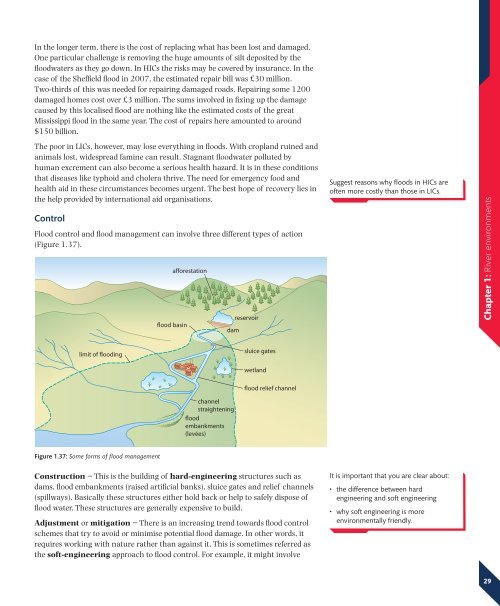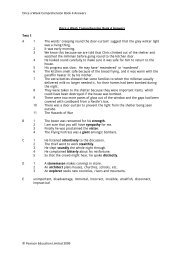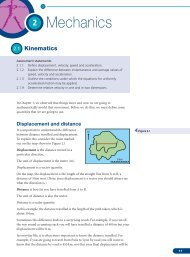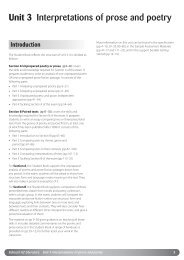Edexcel IGCSE Geography Chapter 1 - Pearson Schools
Edexcel IGCSE Geography Chapter 1 - Pearson Schools
Edexcel IGCSE Geography Chapter 1 - Pearson Schools
Create successful ePaper yourself
Turn your PDF publications into a flip-book with our unique Google optimized e-Paper software.
In the longer term, there is the cost of replacing what has been lost and damaged.One particular challenge is removing the huge amounts of silt deposited by thefloodwaters as they go down. In HICs the risks may be covered by insurance. In thecase of the Sheffield flood in 2007, the estimated repair bill was £30 million.Two-thirds of this was needed for repairing damaged roads. Repairing some 1200damaged homes cost over £3 million. The sums involved in fixing up the damagecaused by this localised flood are nothing like the estimated costs of the greatMississippi flood in the same year. The cost of repairs here amounted to around$150 billion.The poor in LICs, however, may lose everything in floods. With cropland ruined andanimals lost, widespread famine can result. Stagnant floodwater polluted byhuman excrement can also become a serious health hazard. It is in these conditionsthat diseases like typhoid and cholera thrive. The need for emergency food andhealth aid in these circumstances becomes urgent. The best hope of recovery lies inthe help provided by international aid organisations.ControlFlood control and flood management can involve three different types of action(Figure 1.37).flood basinafforestationdamreservoirSuggest reasons why floods in HICs areoften more costly than those in LICs.<strong>Chapter</strong> 1: River environmentslimit of floodingsluice gateswetlandflood relief channelchannelstraighteningfloodembankments(levées)Figure 1.37: Some forms of flood managementConstruction − This is the building of hard-engineering structures such asdams, flood embankments (raised artificial banks), sluice gates and relief channels(spillways). Basically these structures either hold back or help to safely dispose offlood water. These structures are generally expensive to build.Adjustment or mitigation − There is an increasing trend towards flood controlschemes that try to avoid or minimise potential flood damage. In other words, itrequires working with nature rather than against it. This is sometimes referred asthe soft-engineering approach to flood control. For example, it might involveIt is important that you are clear about:• the difference between hardengineering and soft engineering• why soft engineering is moreenvironmentally friendly.29
















